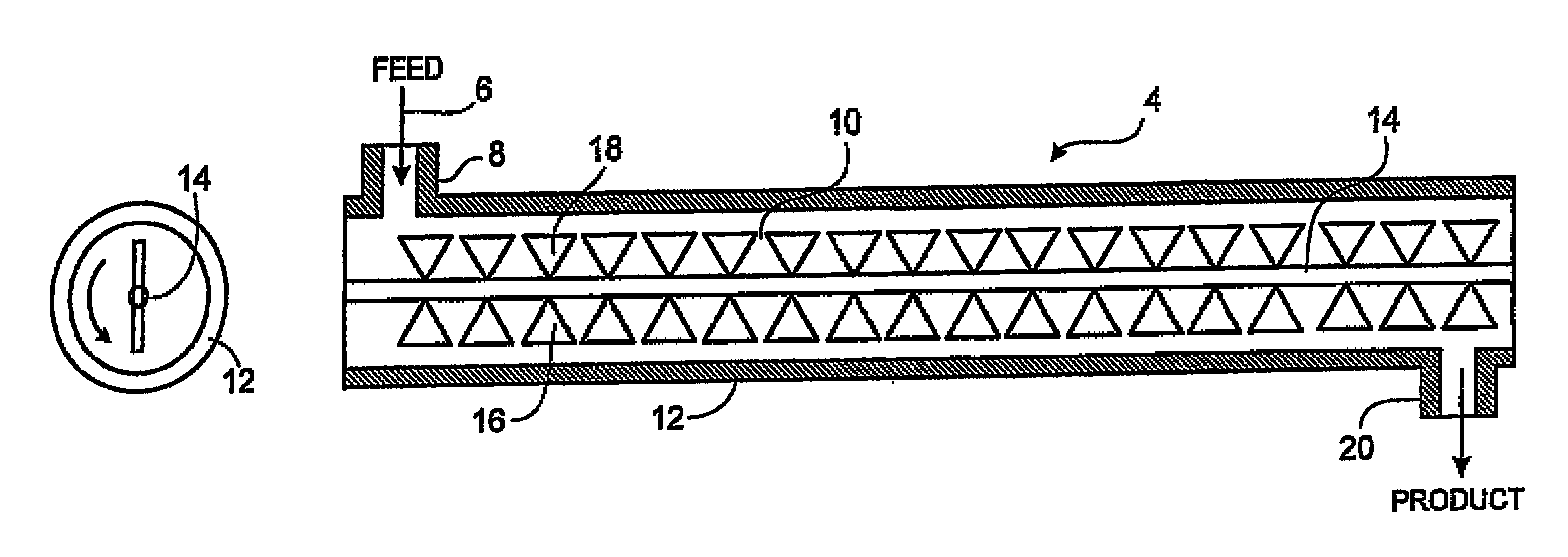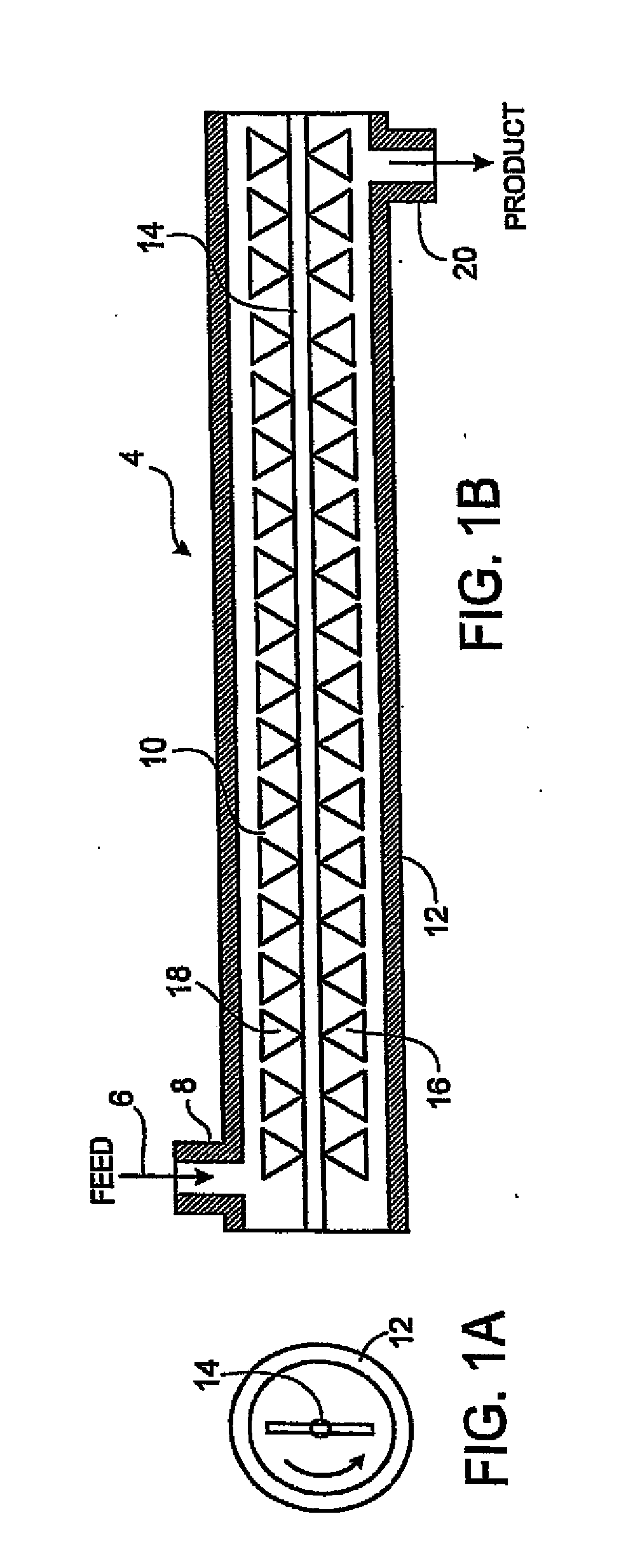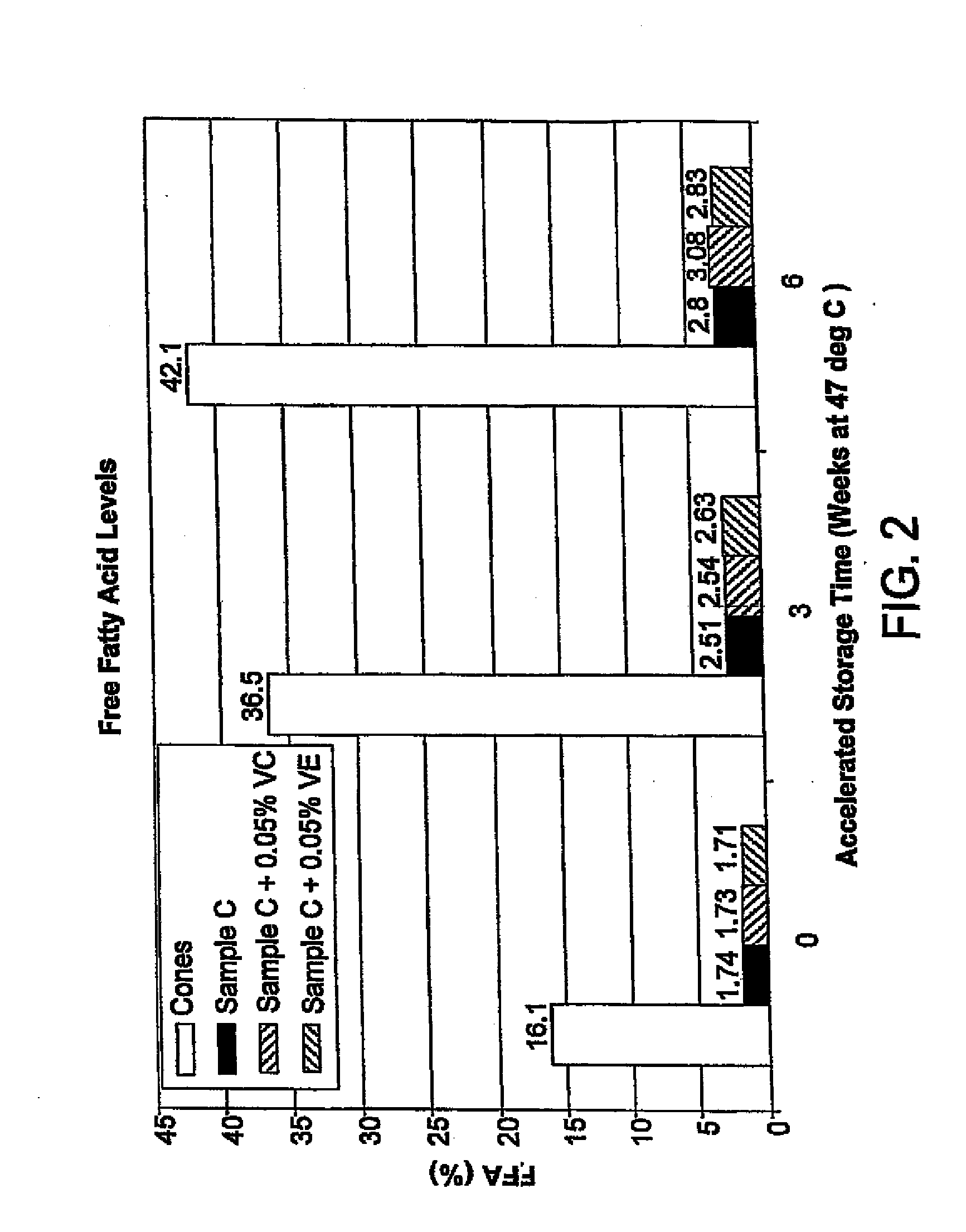Stablized whole grain flour
a whole grain flour and stabilizer technology, applied in the field of stabilized whole grain products, can solve the problems of typical rapid deterioration of raw whole grain flour, and achieve the effects of rapid viscosity analyzer, rapid viscosity, and increased processing toleran
- Summary
- Abstract
- Description
- Claims
- Application Information
AI Technical Summary
Benefits of technology
Problems solved by technology
Method used
Image
Examples
example 1
Stabilized Whole Grain Corn Flour, Sample A
[0047]In this example, No. 2 yellow dented corn was heated by forced hot air while being conveyed in a layer of about 0.5-4 inches thickness on a meshed metal belt in an oven. The forced hot air moved perpendicular to the conveying direction through the meshed belt and the layer of the corn, being in direct contact of individual kernels of corn. The temperature of the corn kernels reached 250-260° F. and the dwell time was 20 minutes. The corn was then cooled and hammer milled to a granulation of trace on 20M and 63.3% through 60M. The product was negative for catalase activity. The product had an oil content of 4.50% and a total dietary fiber content of 9.9%. The product bad toasted corn flavor.
example 2
Stabilized Whole Grain Corn Flour, Sample B
[0048]In this example, No. 2 yellow dented corn was heated by live steam of 80-120 psi through steam injection inlets in a heating chamber fitted with an auger that propels the corn. The temperature of the corn kernels reached above 300° F. upon contact with the live steam but the bulk of the corn reached a temperature of 240° F. The dwell time was 5-7 minutes. The corn was then fed into a screw conveyor that is steam jacketed to maintain the temperature inside the conveyor. The temperature of corn was maintained at 200-230° F. and the dwell time was 20 minutes. The product was then hammer milled to a granulation of trace on 20 M and 74.5% through 60M. The product was negative for catalase activity. The product had an oil content of 3.52% and a total dietary fiber content of 8.9%. The product had a flavor note characteristic of sweet corn and popcorn.
example 3
Stabilized Whole Grain Corn Flour, Sample C
[0049]In this example, germ was separated from No. 2 yellow dented corn using a degerminator and an aspirator. The separated germ was heated by live steam at 80-120 psi through steam injection inlets in a heating chamber fitted with an auger that propels the germ. The temperature of the germ reached about 300° F. upon contact with the live steam but the bulk of the germ reached a temperature of 235° F. The dwell time was 5-7 minutes. The germ was then fed into a screw conveyor that is steam jacketed to maintain the temperature inside the conveyor. The temperature of the corn was maintained at 200-230° F. and the dwell time was 18 minutes. The treated germ was negative in catalase activity and had a popcorn and buttery flavor note.
[0050]The rest of the corn components including endosperm, bran and tip cap were ground to a granulation of 99% through 60M using an attrition mill. The ground flour was recombined with the treated germ in a propor...
PUM
 Login to View More
Login to View More Abstract
Description
Claims
Application Information
 Login to View More
Login to View More - R&D Engineer
- R&D Manager
- IP Professional
- Industry Leading Data Capabilities
- Powerful AI technology
- Patent DNA Extraction
Browse by: Latest US Patents, China's latest patents, Technical Efficacy Thesaurus, Application Domain, Technology Topic, Popular Technical Reports.
© 2024 PatSnap. All rights reserved.Legal|Privacy policy|Modern Slavery Act Transparency Statement|Sitemap|About US| Contact US: help@patsnap.com










